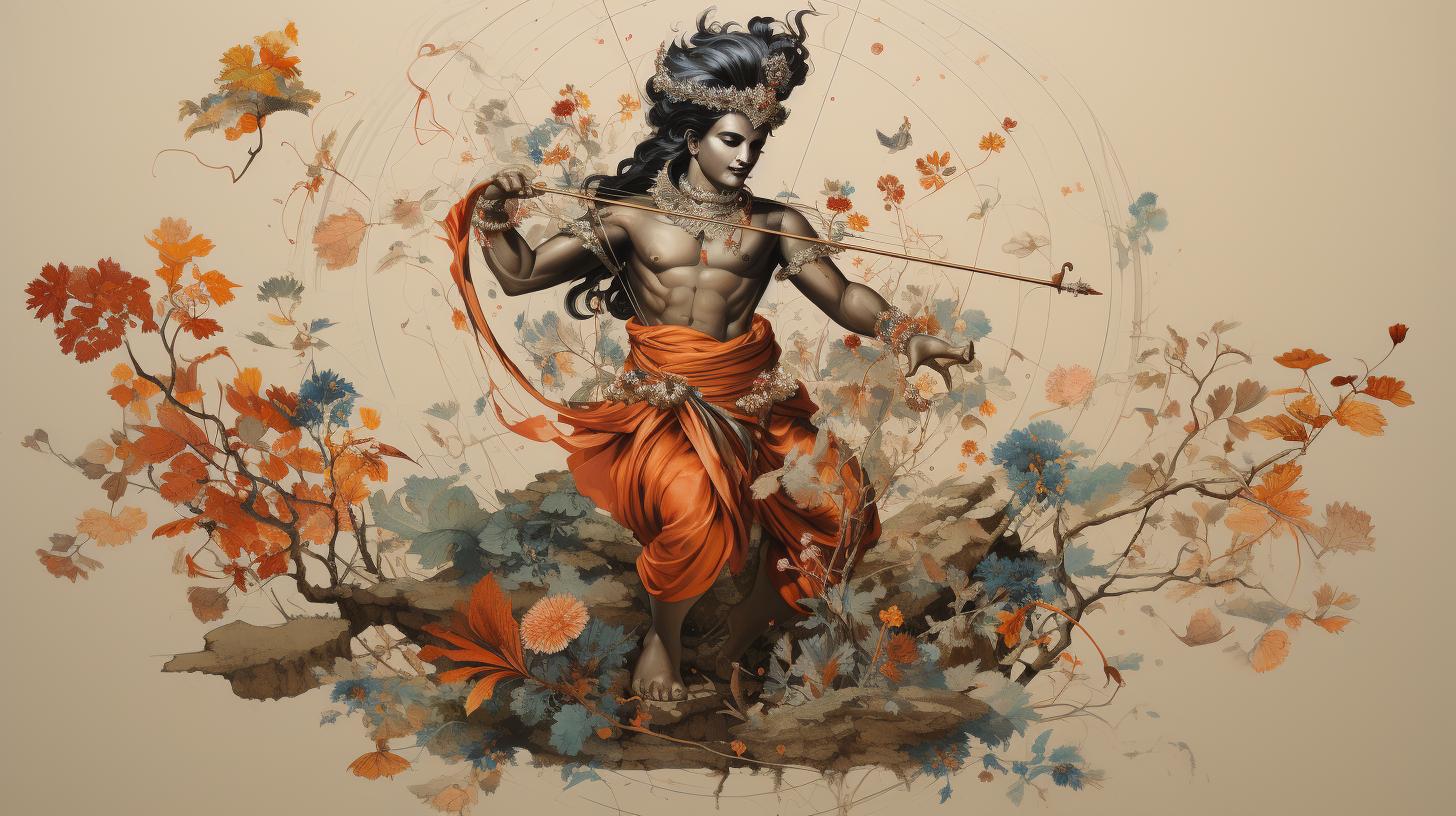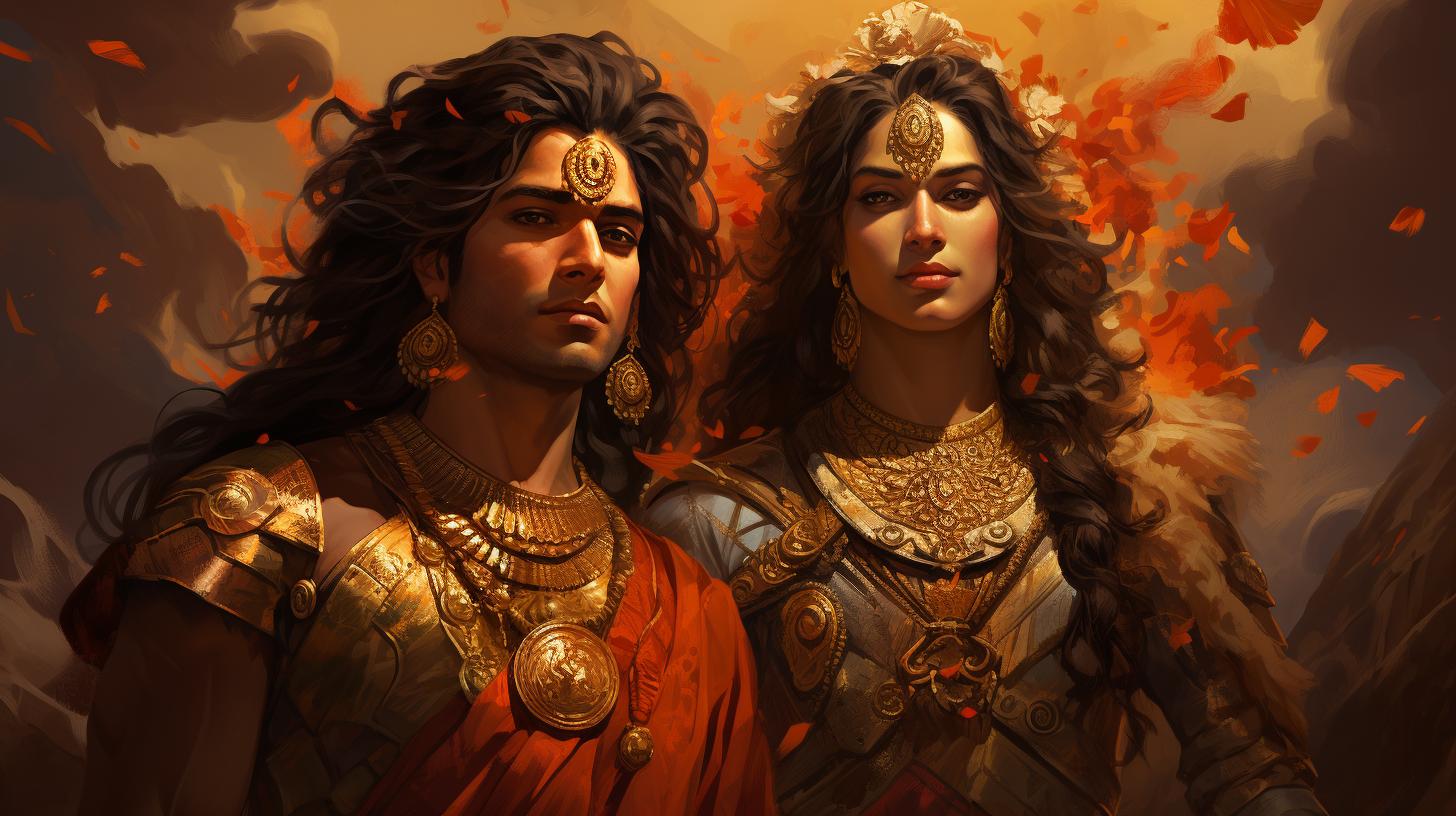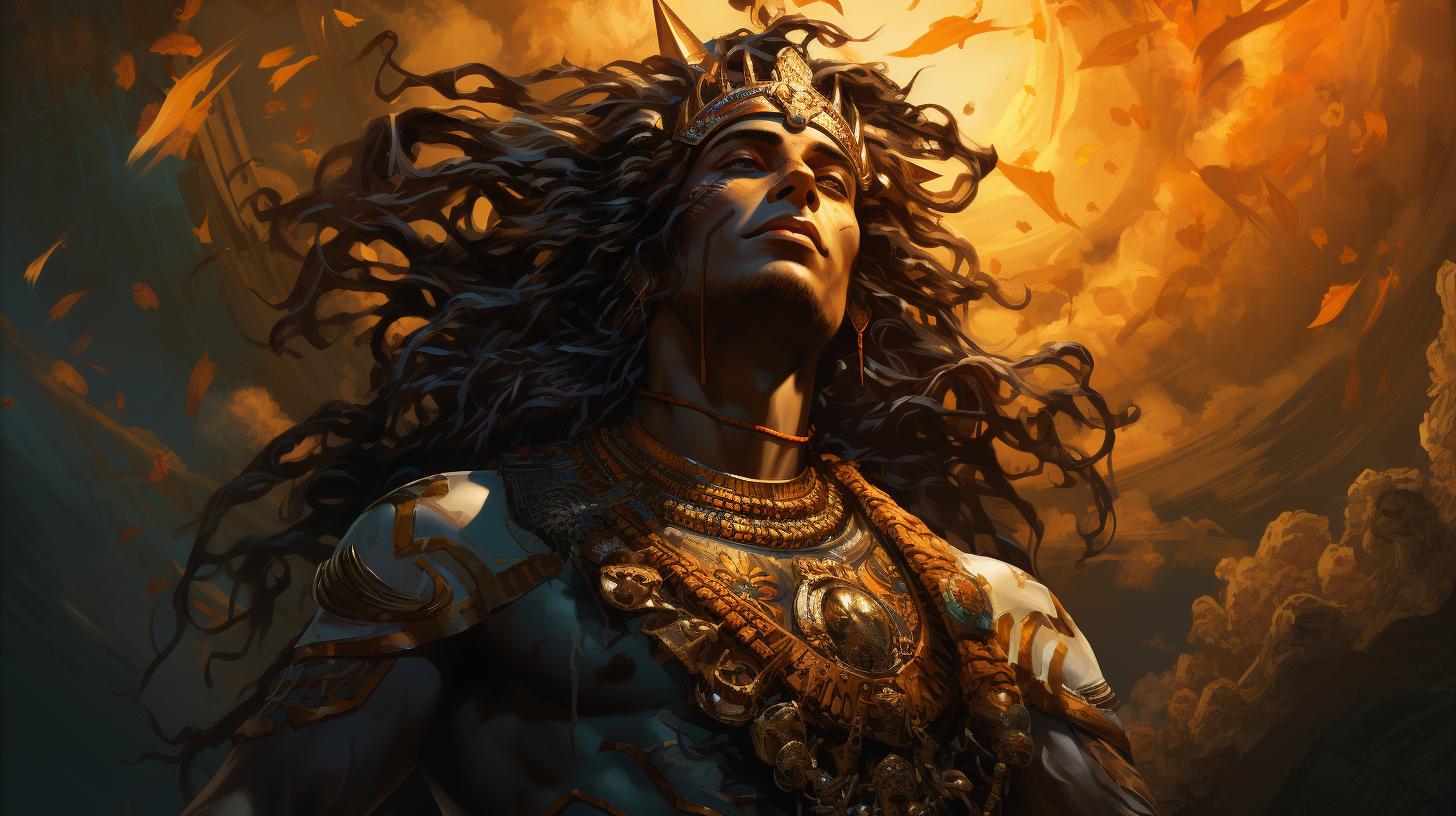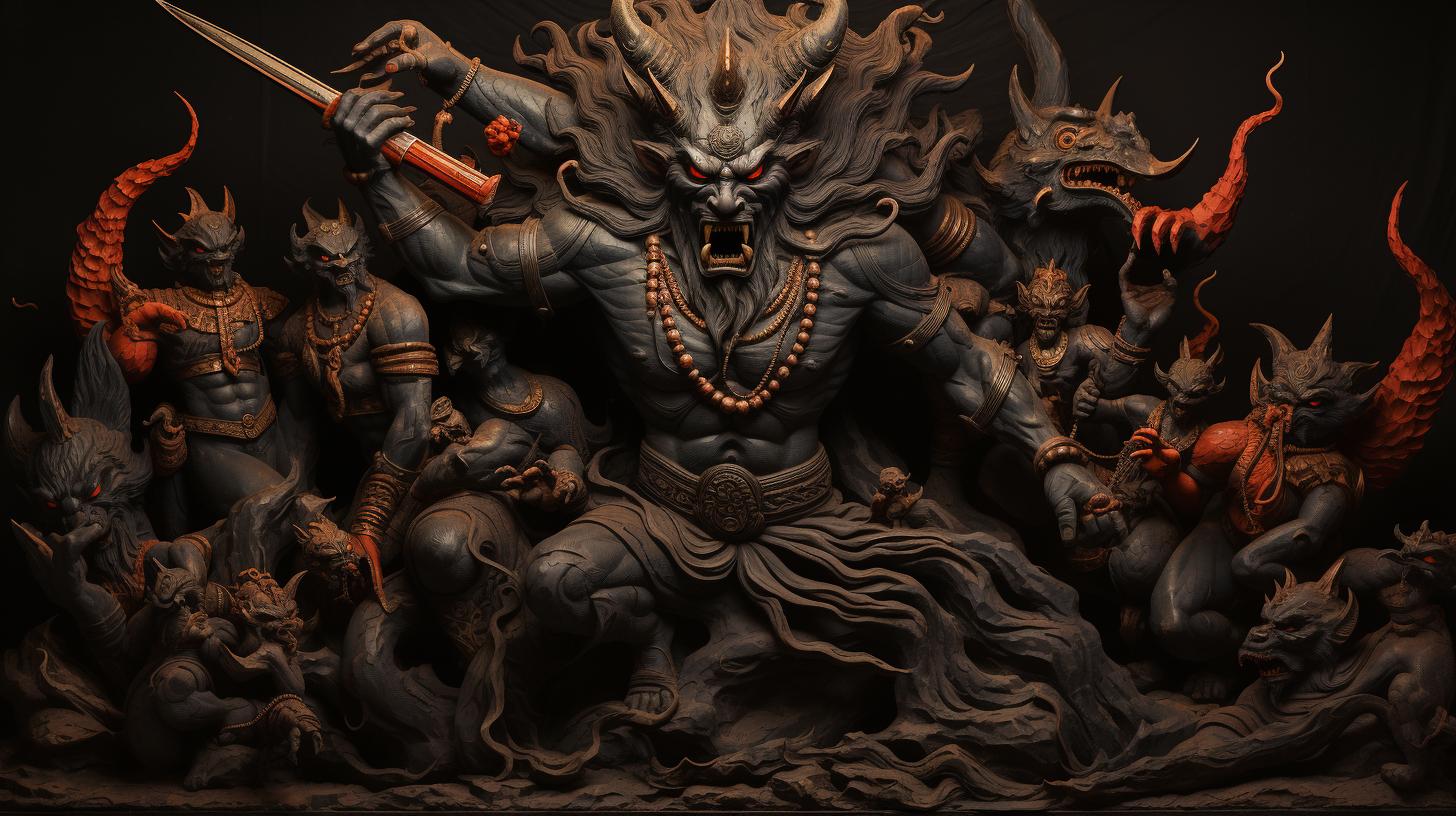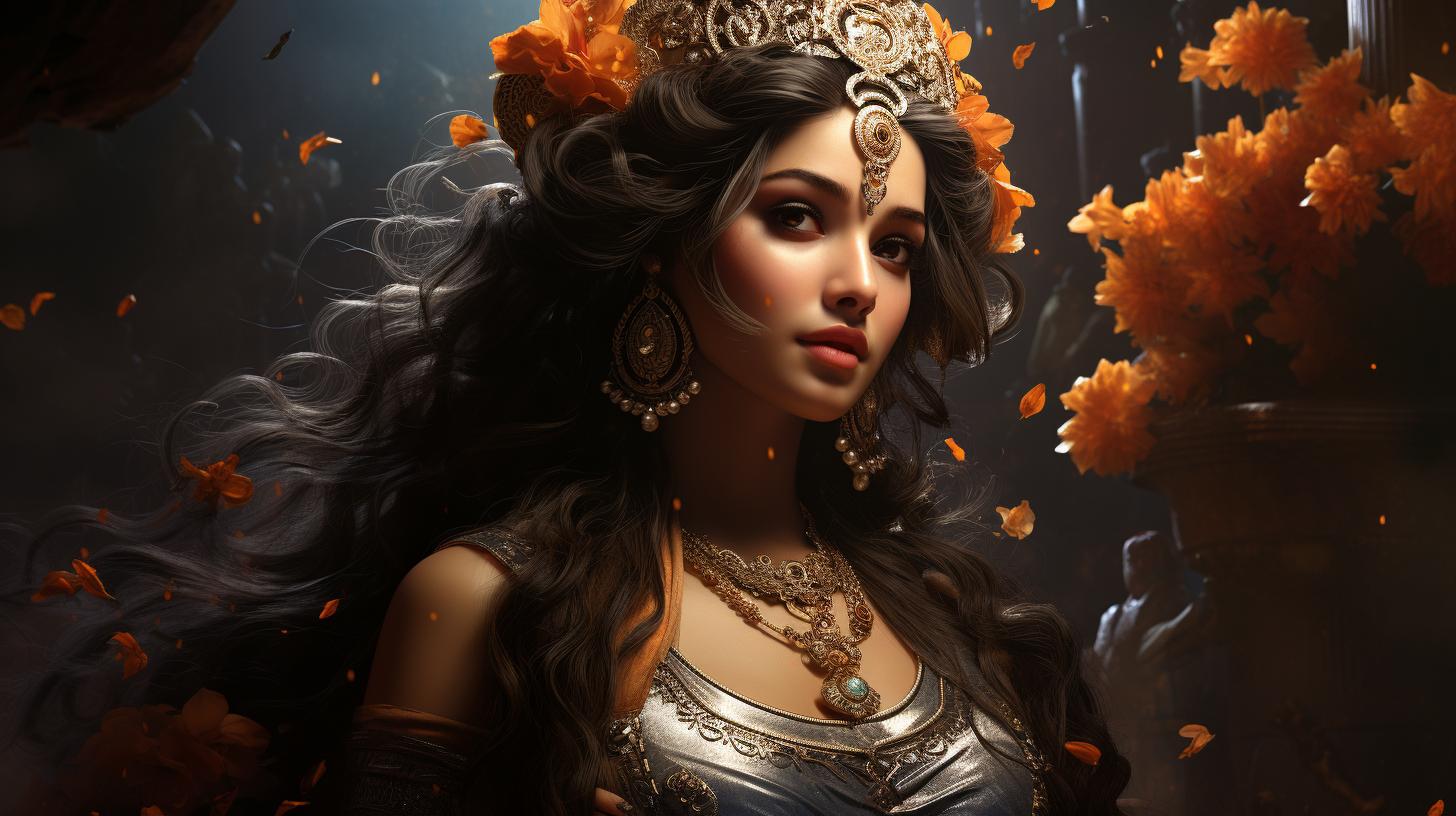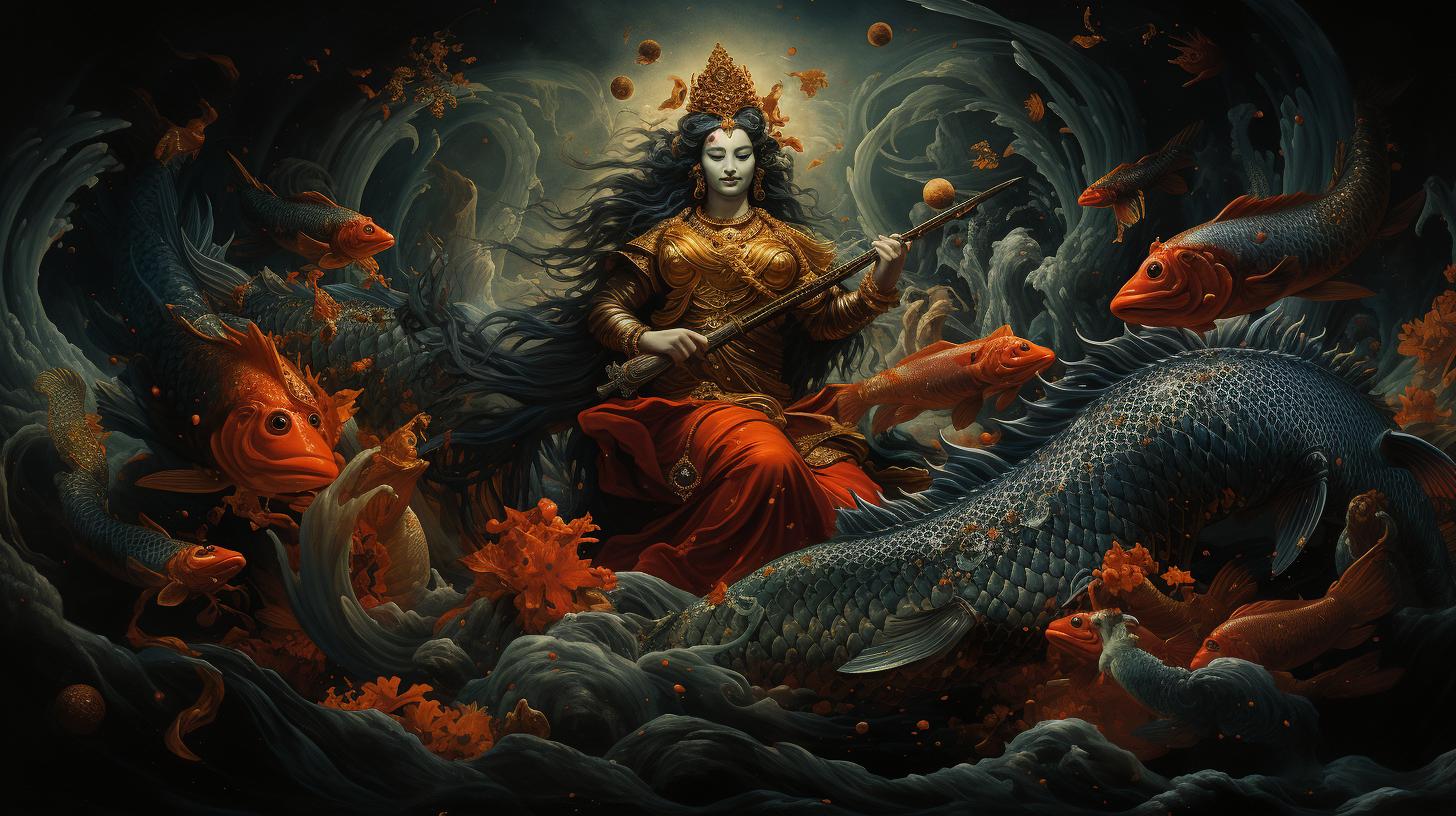Indian God Indra: The Supreme Rain Deity in Hindu Mythology
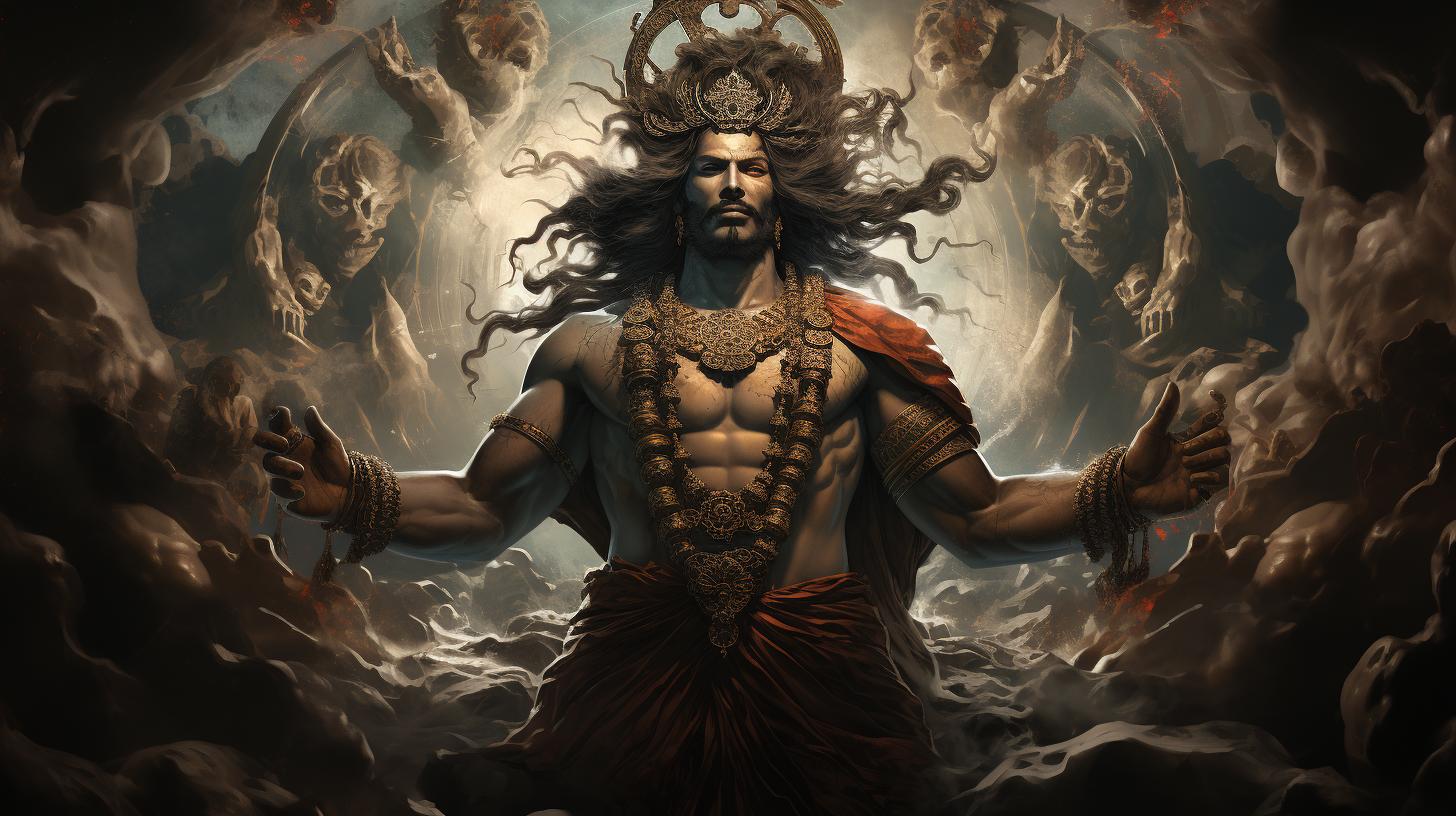
Indra, the Indian god of rain in Hindu mythology, holds a significant role in Vedic texts, showcasing his power and leadership. He is associated with heroic figures like Arjuna and is known for his battles against demons, particularly his triumph over Vritra.
Symbolically, Indra represents the guardian of harvests and is connected to lightning, thunderbolts, and storms. Beyond Hinduism, Indra’s influence extends to other religions and cultures, including Buddhism. Today, Indra continues to be revered in modern Hindu rituals and has a lasting impact on Indian art, literature, and popular culture.
Indra in Vedic Texts
Indra, the god of rain in Hindu mythology, plays a significant role in the Vedic texts, particularly in the Rigveda. As one of the most prominent deities in the early Vedic period, Indra is depicted as a powerful and fierce warrior with exceptional strength and valor.
Role of Indra in the Rigveda
In the Rigveda, Indra is celebrated as the king of gods and the leader of the divine forces. He is often glorified for his extraordinary feats in battles against the Asuras, the forces of darkness and chaos.
Indra is credited with safeguarding the cosmic order and upholding the principles of righteousness.
Indra’s Characteristics and Attributes in the Vedic Literature
Indra is described as a deity of immense physical strength and courage. He is associated with the thunderbolt, referred to as the Vajra, which symbolizes his power and authority. Indra is often depicted as riding a celestial chariot drawn by divine horses, demonstrating his swift mobility and dominion over the skies.
Indra’s Relationship with Other Vedic Deities
In the Vedic literature, Indra maintains a complex relationship with other deities. He is frequently mentioned in conjunction with gods like Agni, Varuna, and Soma. Indra’s close association with these deities suggests his role as a protector and benefactor, ensuring the balance and harmony within the divine realm.
In conclusion, Indra’s presence in the Vedic texts reveals his status as a mighty and revered deity. With his bravery, strength, and leadership qualities, Indra captivates the imagination of the Vedic society and establishes himself as a central figure in the religious and cultural beliefs of ancient India.
Myths and Legends Associated with Indra
Through his extraordinary strength and strategic prowess, Indra defeated various malevolent creatures, ensuring the safety and prosperity of the gods and humans alike.
Indra and the defeat of Vritra: A celebrated myth
One of the most celebrated myths revolves around Indra’s epic battle with Vritra, a fearsome serpent-like demon who had seized control of the celestial waters.
Indra, armed with his thunderbolt weapon, engaged in a fierce conflict with Vritra and ultimately emerged victorious, liberating the waters and restoring balance to the cosmos.
Indra’s association with hero figures like Arjuna in the Ramayana and Mahabharata
Indra’s association with heroic figures extends beyond his battles against demons.
In the famous Indian epics, the Ramayana and the Mahabharata, Indra plays a significant role as a divine benefactor of noble warriors. Notably, he forms a deep bond with Arjuna, supporting and aiding him throughout his extraordinary journey and pivotal moments.
These engaging myths and legends surrounding Indra further emphasize his embodiment of strength, courage, and divine intervention throughout Hindu mythology.
Religious and Symbolic Significance of Indra
Indra, the Indian god of rain, holds immense religious and symbolic significance within Hindu mythology. This section explores various aspects of Indra’s significance, highlighting his roles as a representation of power and leadership, the guardian of rains and harvests, and his strong connection to lightning, thunderbolts, and storms.
Indra as a representation of power and leadership
Indra is revered for his unparalleled power and authoritative presence in Hindu mythology. He embodies the qualities of strength, bravery, and strategic intelligence, making him a symbol of leadership and kingship.
Indra is often portrayed as the ruler of the gods and the chief deity in various Vedic texts, asserting his dominion over the celestial realms and bestowing blessings upon mortals.
Indra as the guardian of rains and harvests
One of the most important aspects of Indra’s significance lies in his role as the guardian of rains and harvests. In agrarian societies like ancient India, the arrival of rains was vital for agricultural prosperity.
Indra’s ability to control rainfall and ensure bountiful harvests made him a revered deity among farmers and cultivators. He was believed to bring fertility to the land and ensure the sustenance of life.
Indra’s association with lightning, thunderbolts, and storms is deeply rooted in his mythology. He is often depicted wielding a thunderbolt weapon, known as the Vajra, which he would use to defeat demons and bring forth rains.
The lightning and thunderbolts symbolize his immense power and role in controlling natural forces. Indra’s ability to generate storms and rainwater is seen as a divine intervention that sustains life and brings prosperity.
Indra’s Influence beyond Hinduism
Indra, the god of rain in Hindu mythology, has extended his influence beyond the realms of Hinduism and has left a significant mark on other religions and mythologies. Let’s explore his presence and significance in various belief systems.
Indra’s presence in other religions and mythologies
Indra’s mythology has transcended the boundaries of Hinduism and has permeated into neighboring religions and mythologies. In ancient Persia, Indra’s character found its way into Zoroastrianism as Verethragna, the god of victory.
Similarly, in ancient Greece, the mighty Zeus bears resemblances to Indra, portraying a strong connection between these two distant mythologies.
Indra’s role in Buddhism and its teachings
In Buddhism, Indra is revered as a Bodhisattva, an enlightened being who has chosen to delay his entrance into Nirvana to assist others on their journey. Indra is often depicted as a guardian deity who protects the teachings of Buddhism and aids practitioners in their spiritual path.
Cross-cultural connections and adaptations of Indra’s mythology
Indra’s mythology has served as a source of inspiration for various cultures around the world. From ancient Persia to Southeast Asia and beyond, adaptations of Indra’s stories and symbolism are evident in the religious and cultural practices of these regions.
The pervasive presence of Indra reflects the universality and enduring appeal of his character and legends.
As we explore Indra’s influence beyond Hinduism, it becomes apparent how his narratives and archetypes have permeated various belief systems, demonstrating the significance and widespread admiration for this powerful deity.
Indra in Contemporary Culture and Society
Indra, the revered Indian god of rain, continues to hold significant presence and influence in modern Hindu rituals and festivals. His name echoes through sacred ceremonies and religious gatherings, where devotees invoke his blessings for abundant rains and fruitful harvests.
Indra’s role as the guardian of rains and harvests remains cherished, inspiring communities to celebrate his divinity with devotion and gratitude.
Indra’s presence in modern Hindu rituals and festivals
Indra finds special reverence in festivals like Indra Jatra and Varuna Purnima, where devotees pay homage to his divine authority by conducting elaborate processions and worship rituals. These festivities showcase Indra’s significance as the divine bestower of rains, with prayers and rituals dedicated to ensure timely precipitation and agricultural prosperity.
Indra’s influence in Indian art, literature, and popular culture
Indra’s magnificence transcends religious ceremonies and permeates various forms of Indian art, literature, and popular culture. Depictions of Indra can be found in ancient sculptures, paintings, and architectural motifs, showcasing his majestic form wielding thunderbolts and riding celestial elephants.
His awe-inspiring stories are immortalized in epic scriptures like the Ramayana and the Mahabharata, captivating readers and inspiring generations with his valor and divine interventions.
Indra’s mythology also inspires contemporary Indian literature, where his character represents power, leadership, and the triumph of good over evil. Moreover, Indra’s influence extends to Indian cinema, where his legends are adapted into captivating narratives, instilling a sense of cultural pride and preserving his legacy in the modern entertainment industry.
The relevance of Indra’s mythology in today’s world
Despite the march of time and societal changes, the relevance of Indra’s mythology endures, reminding humanity of the cyclical nature of life and the importance of balance in nature. Indra’s portrayal as the protector of crops and the bringer of rains holds particular significance in an era marked by environmental concerns and climate change.
His stories serve as a timeless reminder of humanity’s interdependence with the natural world and the need to respect and conserve our resources for future generations.
..












